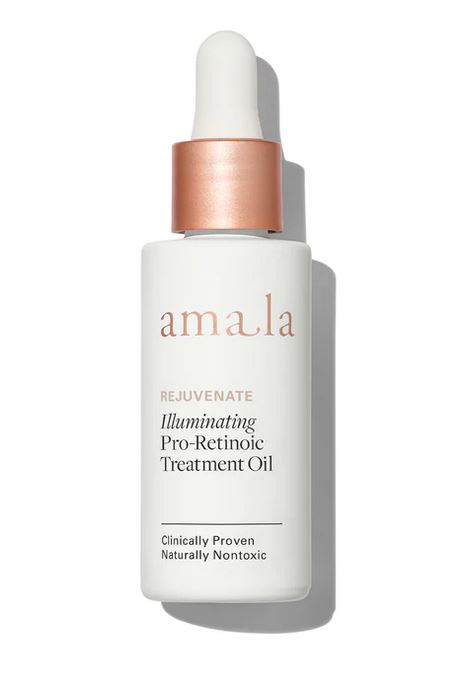Retinol is often seen as something of an anti aging super ingredient – one of the few names that most consumers recognize in the often confusing world of skin care.
Truth to tell it is retinoic acid that should be winning all the plaudits – retinol probably comes in a rather poor second.
Retinoic acid – in the form of tretinoin and other retinoids – has long been used by dermatologists to treat skin problems like acne and later to improve some of the symptoms of aging skin.
Retinoic acid has been shown to trigger many reactions within and between skin cells and has an effect on – among other things – sebum production (hence its use in acne formulations) and collagen production.
Scientists discovered that tretinoin applied topically directly inhibits the enzymes that stop or slow down collagen formation as we age.
The slowing down of collagen and elastin production is one of the major factors in speeding up skin wrinkling and sagging.

Retinoids are prescription only
Tretinoin and retinoids in general are among a very few select select group of agents that can be added to topical creams and result in a noticeable anti aging effect.
That sounds like great news but the difficulty is if you want a topical cream with a retinoid in it – you have to get it under prescription from a dermatologist.
Common brands include Retin A (the original formulation for treating acne), Renova (with added moisturizers) and some recently introduced micro-encapsulated formulations.
The reason such products are prescription only is because they can have bad side effects if not managed professionally – skin irritation, redness, soreness, over sensitivity and inflammation.
Retinols were developed partly to overcome sensitivity issues whilst still offering some improvement in skin aging.
The fact is that these commonly available over the counter retinol-based products are often sold to us as if it they have the same effectiveness as retinoids (retinoic acid) when the simple truth is – they don’t.

What matters is that if you think you need retinol in your skin cream or serum – you should know exactly what you are getting and how effective it is likely to be as an anti aging ingredient.
What is retinol?
Tretinoin is the acid form of vitamin A (retinoic acid) and is one of a group of retinoids with proven effectiveness against common signs of photoaging. Retinol is a precursor of retinoic acid which can be converted into retinoic acid by the body in a process that requires several metabolic steps. Retinoids require no such conversion and are immediately effective on transfer to the skin.
Retinyl palmitate which you may also see on the back of your skin care packaging is even further away from the effectiveness of a retinoid – requiring additional steps to convert and produce the anti wrinkle effect you are seeking.
As renowned skin care expert Dr Todorov comments at Smartskincare.com:“a relatively large amount of retinol and even larger amount of retinyl palmitate needs to be delivered into a cell to boost retinoic acid levels and produce clinically meaningful effects”
In other words you are going to need large amounts in a skin care product to achieve rejuvenating results.
Problems with retinol based products
There are several hurdles you need to overcome if you are going to be happy with the effects you get with a retinol product:
- Retinols will never perform as effectively as retinoids in any formulation so you need to lower your expectations if you have confused the two ingredients in your mind.
- The product has to be well formulated with high levels of retinol and an effective delivery system so there is no contamination or oxidization. Although there are some good value options – many products will come from high end skin care brands with the price tag to match. Two value products worth looking at that – Green Cream that uses suspended cooling gels and Afirm 3x with a microencapsulation formulation.
- You need to know how much retinol is present and it needs to be a high level to be effective – currently around 1% is the maximum you are going to get over the counter.
- You may get a skin reaction at a higher level of retinol – sensitive skins in particular can react with redness, soreness and other signs of irritation. Going for a brand with a better delivery system means that higher levels of retinol can be kept fresh and activated only on contact with the skin minimizing the risk of a bad reaction.
- Retinol treated skin will be more sensitive to sunlight – you will need to up your level of sun protection.
- Conversion rates vary from one individual to another – your body may be simply less efficient at converting retinol or retinyl palmitate into retinoic acid. You may see little or no improvement and someone else using the same product may report great success. You can’t judge how well a retinol product will work for you based on one review from another user. Many reviewers reporting success is a better bet but the only way to test the product is to try it for yourself.
All the above point of course apply many times over if you choose a retinyl palmitate product – although you are less likely to get an adverse reaction.
So – think carefully about what you want from your retinol based cream or serum and if you do decide to buy – don’t expect it to perform like a retinoid!



